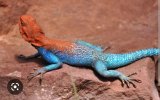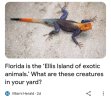SoupHasCookied
Member
It has been a while hey? Last post was in March! Well, I think it's time I gave a status update on my lizard! So she seems to be happy and healthy now! Shes very calm while being handled (thanks to daily handling no doubt!), very active during the day and eats very well, so far she's doing great! Got her UVB and correct heating, and upped the enclosure size, so now it's nice and big with lots of running space, we also plan on building up more, so they can climb and have 2 floors! As for "they", we also now have a male who joined the family shortly after the madam did, he is incredibly calm, even more than our cute female (probably because he is male, so just more chill?), I actually think he likes getting attention, since he just enjoys being picked up and played with, running around climbing all over you at times (or sometimes just chilling, sitting in your hand like he hasn't got a care in the world!), I have truly fallen in love with these guys.
We have taken them both to an exotic pets vet the other day just for a checkup to make sure all is still well and good (madam is gravid), they said that both looks healthy and the eggs seems to be going along without any issues (nice!)
I plan on trying to breed them as well as creating a website with a complete care guide on how to care and breed them. This is primarily to help others along in the future, since their care is very scarce, and those that exist are either wrong, sketchy or just feels incomplete, at least if I write one I plan on making it as complete and legit as possible, with my experience with them as the backbone (I hope that they will become more popular as pets). I also plan on contributing to their wiki page someday, since it's a little empty right now (https://en.wikipedia.org/wiki/Agama_atra)
I have also started breeding dubia roaches and mealworms (much cheaper than buying each month), but I also noticed that they like superworms and silkworms (as a treat). I have read that they also eat some plants, but I could never get mine to take a bite out of any veggies I gave them, so that might either be wrong information or they just prefer insects? Anyhow, they eat well is what my point is!
Also, I am letting them both live in the same enclosure, I read that they live in groups, and they haven't tried to kill each other (I would not recommend housing 2 males together tho, they - the males specifically - do have a hierarchy system from what I understand), so I believe it's all good
Take a look at the pics if you wanna see them! Also any tips/advice from you will also still be appreciated! I am still no pro at reptile keeping
We have taken them both to an exotic pets vet the other day just for a checkup to make sure all is still well and good (madam is gravid), they said that both looks healthy and the eggs seems to be going along without any issues (nice!)
I plan on trying to breed them as well as creating a website with a complete care guide on how to care and breed them. This is primarily to help others along in the future, since their care is very scarce, and those that exist are either wrong, sketchy or just feels incomplete, at least if I write one I plan on making it as complete and legit as possible, with my experience with them as the backbone (I hope that they will become more popular as pets). I also plan on contributing to their wiki page someday, since it's a little empty right now (https://en.wikipedia.org/wiki/Agama_atra)
I have also started breeding dubia roaches and mealworms (much cheaper than buying each month), but I also noticed that they like superworms and silkworms (as a treat). I have read that they also eat some plants, but I could never get mine to take a bite out of any veggies I gave them, so that might either be wrong information or they just prefer insects? Anyhow, they eat well is what my point is!
Also, I am letting them both live in the same enclosure, I read that they live in groups, and they haven't tried to kill each other (I would not recommend housing 2 males together tho, they - the males specifically - do have a hierarchy system from what I understand), so I believe it's all good
Take a look at the pics if you wanna see them! Also any tips/advice from you will also still be appreciated! I am still no pro at reptile keeping
Attachments
-
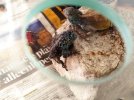 photo_2022-12-13_18-24-21.jpg163 KB · Views: 8
photo_2022-12-13_18-24-21.jpg163 KB · Views: 8 -
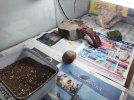 photo_2022-12-13_18-25-07.jpg205.7 KB · Views: 9
photo_2022-12-13_18-25-07.jpg205.7 KB · Views: 9 -
 photo_2022-12-13_18-25-03.jpg213.8 KB · Views: 7
photo_2022-12-13_18-25-03.jpg213.8 KB · Views: 7 -
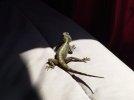 photo_2022-12-13_18-25-00.jpg106.3 KB · Views: 7
photo_2022-12-13_18-25-00.jpg106.3 KB · Views: 7 -
 photo_2022-12-13_18-24-57.jpg179.2 KB · Views: 6
photo_2022-12-13_18-24-57.jpg179.2 KB · Views: 6 -
 photo_2022-12-13_18-24-52.jpg104.2 KB · Views: 7
photo_2022-12-13_18-24-52.jpg104.2 KB · Views: 7 -
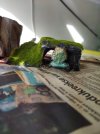 photo_2022-12-13_18-24-49.jpg125.2 KB · Views: 6
photo_2022-12-13_18-24-49.jpg125.2 KB · Views: 6 -
 photo_2022-12-13_18-24-46.jpg133.5 KB · Views: 6
photo_2022-12-13_18-24-46.jpg133.5 KB · Views: 6 -
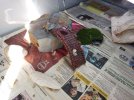 photo_2022-12-13_18-24-44.jpg210.1 KB · Views: 8
photo_2022-12-13_18-24-44.jpg210.1 KB · Views: 8
